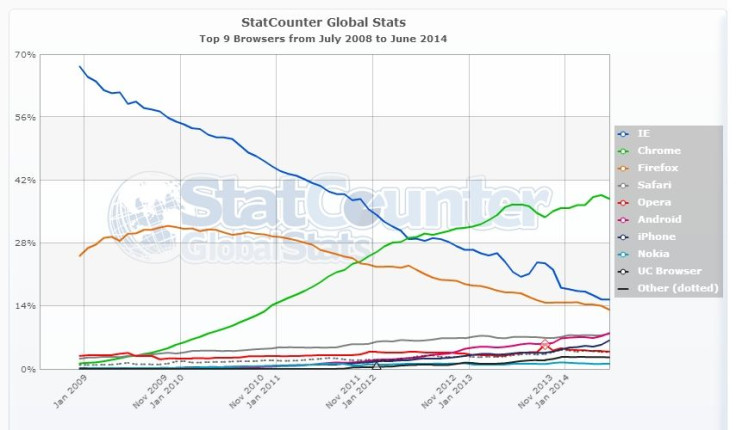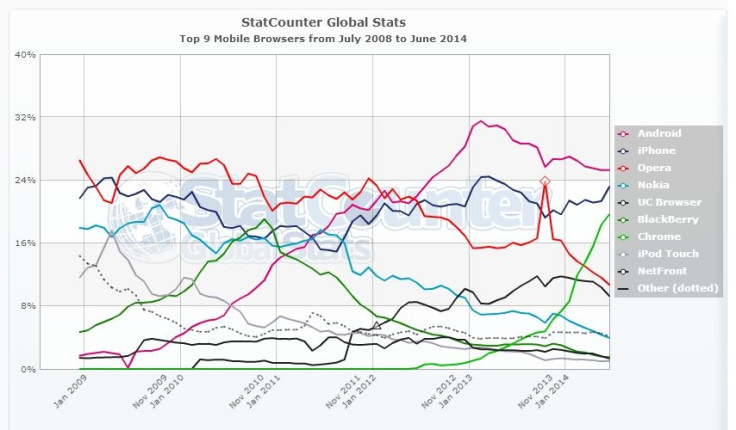Google Chrome Surpasses Internet Explorer In Combined Browser Market Shares For First Time

A report by the Adobe Digital Index (ADI) shows that Google Chrome has surpassed Microsoft’s Internet Explorer (IE) in U.S. Market Share in combined desktop and mobile markets for the first time.
ADI’s market share calculation represents the share of visits from each browser for “the average U.S. web site.” ADI uses data from consumer-facing sites in the entertainment, retail, financial, travel and media markets.
ADI reports that Chrome’s market share is growing at about 6 percent year-over-year (YoY). Coincidentally, IE’s market share is shrinking at about 6 percent YoY.
The Wall Street Journal points out that browser traffic is more than just bragging rights. It directly affects ad revenue, particularly for Google. Chrome's address bar doubles as a Google search bar, so when users search anything on Chrome, it brings them directly to the Google search results page where it hosts ads.
StatsCounter records similar numbers for the top 5 browsers across platforms in the U.S. (StatsCounter only measures traffic on the 3 million or so websites where it's tracking software is installed.)

Chrome is even more successful worldwide, where it outright dominates the top 5 browsers with a 37 percent market share. It surpassed Firefox in November 2011 and IE in May 2012.

Chrome became publicly available in December 2008 and has consistently risen in popularity. ADI technology analyst Tyler White says Chrome is growing in popularity because users appreciate a consistent experience across platforms. White says Chrome’s overwhelming popularity on Android devices has helped the browser become the market leader both domestically and abroad. In other words, if consumers use Chrome on their desktops, they’re more likely to switch to Chrome on their mobile devices and vice versa.
Still, Apple’s Safari browser is the most popular browser on mobile devices. As of April 2014, Safari dominates the mobile market with a 59 percent market share. Chrome and Android combine for 35 percent of browser shares.
IE is still the most popular browser on desktops, with a 43 percent market share. Chrome holds 30 percent of the desktop market share.
ADI’s principal analyst Tamara Gaffney says the market is diversifying That could be due to a major shift from desktop-centric computing to a more diversified cross-device world.
“Today, the market is fragmented,” Gaffney says. “There are four big players, and there is a certain portion of the digital audience using each of them, depending on which device is in use at any given time. Marketers can no longer develop for a single browser -- especially in the mobile space.”
While Microsoft is showing the biggest decline in usage over the years, Mozilla isn't faring too well either. ADI suspects its decline is due to a lack of presence on mobile devices. Based on Chrome's mobile growth, Mozilla shouldn't be the only ones worried about their mobile presence either.

© Copyright IBTimes 2024. All rights reserved.






















